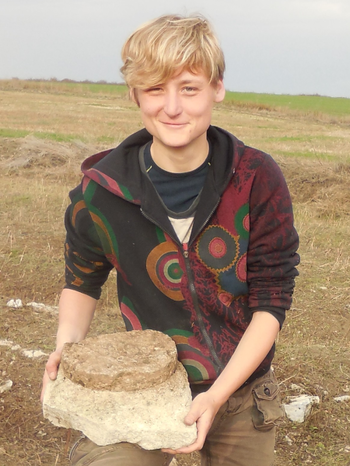Dr. Barbora Weissova

Landscape Archaeology and Architecture (LAA)
Classical Archaeology
Ruhr-Universität Bochum
Am Bergbaumuseum 31
44791 Bochum
Studies
2013 – 2017
PhD. studies of Classical Archaeology at Freie Universität in Berlin,
Stipendium BerGSAS LAA
2012/2013
Research fellowship at the University College of London
2009
Started PhD. Studies of Classical Archaeology at the Charles University in Prague, thesis: "Analysis of Spatial Relations of Thracian Burial Mounds to Flat Settlements"
2007 – 2009
Master studies of Classical Archaeology at the Charles University in Prague, thesis: "Antique Versus Classical" in the 20's of the 20th Century in Czechoslovakia"
Professional Development
Since 2006
Stable member of the archaeological team of Charles University, excavating yearly in Pistiros
2010
Accepted as an official member of TRAP (Tundzha Regional Archaeological Project), www.tundzha.org
2010
Establishment of the BUM Project (Burial Mounds in Thrace Project) focused on spatial analysis of burial mounds in Thrace
Spatial analysis of settlement patterns in Bithynia
The doctoral thesis assessed the economic development of ancient Bithynia situated in the North West territory of Asia Minor during the Hellenistic, Roman and Early Byzantine periods. The study drew for the most part on published data, enriched only modestly by research in the field. The main contribution of the work lied in an elaboration, streamlining, analysis and presentation of already known information.
The main objective of the thesis was to examine this data with new approaches and perspectives, pointing to the hitherto unexpended potential of accessible data. Within the applied analyses, the main focus was on assessing the archaeological record in its spatial context. This allows a ‘spatial perspective’, only rarely taken into account when exploring Asia Minor.
The datasets analysed in order to reconstruct the economic development of Asia Minor include epigraphic evidence, ancient literary sources, settlement patterns and road systems. The date was digitised, and a large part of it can be found online in form of tables and maps.
The study can be characterised as a multi-scalar approach. The values under examination encompass macro-regional scale represented by the territory of NW Turkey, roughly corresponding with the ancient region of Bithynia, and micro-regional scale within, focused on the hinterland of Iznik, the ancient town Nicaea, one of the main centres in antiquity. The largest analysed scale focuses on the interpretation of one of the pottery scatters discovered during the Iznik Survey Project in the spring of 2015 (henceforth the ISP15) in the micro-region, which was covered by a systematic survey. The assembled data is, where applicable, compared with results from the inter-region of Paphlagonia and the supra-region represented by the entire Asia Minor.
This dissertation project was successfully completed within the Research Group A-6 Economic space of the Excellence Cluster 264 Topoi.
2016
B. Weissová, "Quantification of Burial Mounds in Yambol Region", in: Ancient West & East 15 (2016) 113–127.
2012
B. Weissová/P. Tušlová, "Pistiros report 2011, part II", in: Studia Hercynia 16/2 (2012) 8–11.
2011
B. Weissová/P. Tušlová, "Roman Terracotta Lamps from 27 Metropolit Panaret Street, Plovdiv, Bulgaria", in: Studia Hercynia 15/2 (2011) 18–26.
2010
G. Nehrizov/S. Ross/A. Sobotková/B. Weissová, "Tundzha Regional Archaeological Project; Kazanluk Survey and Investigations; Report form spring 2009–2010", in: Studia Hercynia 14 (2010) 56–66.
S. Kučová/P. Tušlová/B. Weissová, "Greek and Black Sea Transport Amphorae in Emporion Pistiros; Quantified Analyses of Material Excavated until 2009", in: Pistiros 4 (2010) 205–220.
